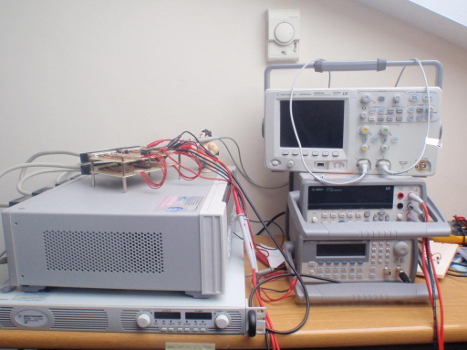WebLab-Deusto team has also designed and developed custom equipments, including the WebLab-Box (an industrial box on which electronics laboratories can be easily developed) and an LXI version of the VISIR remote laboratory. For futher information contact us.
The main target of WebLab-Box is to facilitate the deployment of remote experiments, by providing all the required instruments (web camera, embedded computer, digital/analog signal provider, as well as the experiment itself) in a robust hardware structure that can easily be deployed in other institutions. Furthermore new institutions can easily adapt experiments used in hand-on-labs to WebLab-Box to publish them in the Internet.
This black-box is used in some experiments of WebLab-Deusto to ensure the robustness of the experiments while in production. The box can be deployed autonomously or in a remote laboratory management system (such as WebLab-Deusto, MIT iLabs or others).
Main features of WebLab-Box are the following:
All the WebLab-Deusto PIC, FPGA and CPLD laboratories are deployed on the WebLab-Box. It was awarded for the Best Educational Tool in the ICELIE 2009 conference.


The OpenLabs VISIR project is a remote electronics laboratory, developed in the BTH. Through it, students can carry out electronics experiments no matter their location. Circuits are designed through a web interface, which simulates a traditional, hands-on laboratory. The experiment itself, however, is physically set up by the VISIR hardware, which relies on devices connected through PXI. The measurements are physically taken and the circuit is physically built through a relay based system. Several institutions around the world have their own VISIR instances.
The VISIR-LXI is a new version of the backend of this system, relying on LXI devices instead of PXI devices. This novel approach decrases the costs of the overall equipment, and increases the possible connections among the equipment, at the cost of a slightly higher latency. The project is described in detail in Unai Hernández's dissertation (spanish) and related papers.